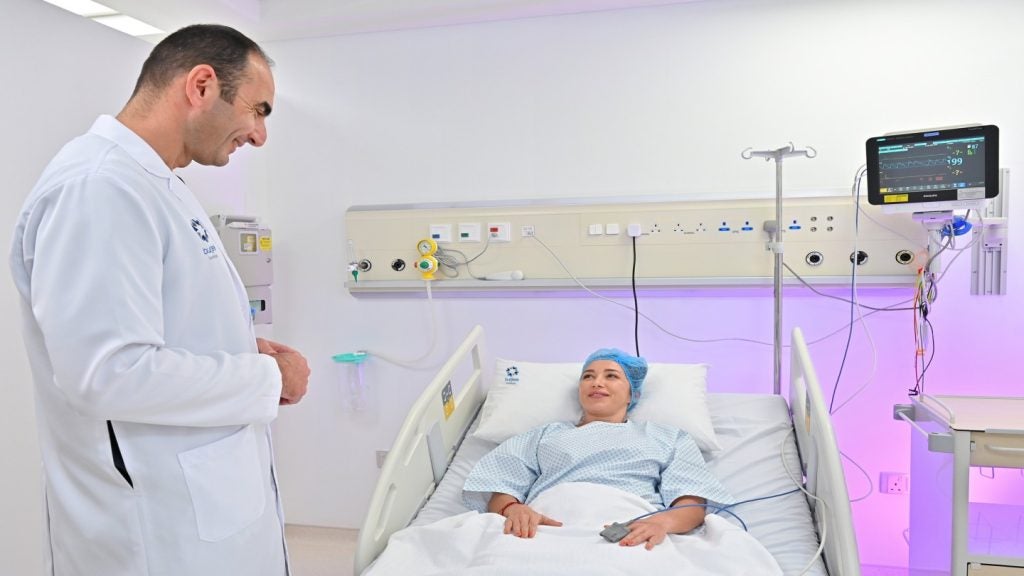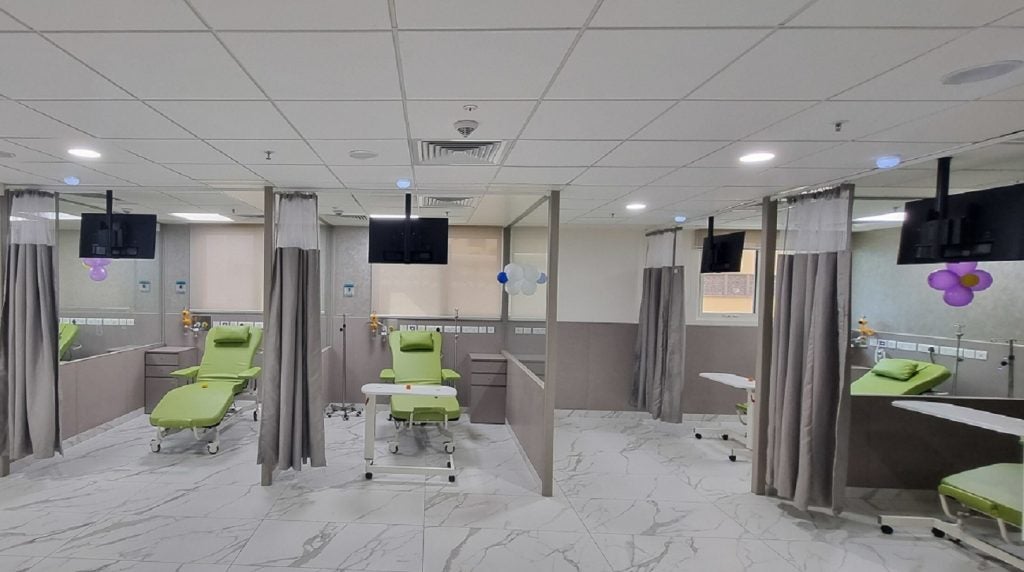With surgical methodologies moving towards minimally invasive techniques and smaller incisions, image-guided surgery (IGS) and computer-aided surgery (CAS) have become indispensable tools. They allow surgeons to know where their instruments are located in relation to important anatomical structures within a patient’s body and see structures without using more invasive open surgical techniques.
“The application of endoscopic sinus surgery has been revolutionised by CAS technologies,” says Dr Ghassan Alusi, consultant otorhinolaryngologist at Barts and The London NHS Trust. “The data acquired from the patient is very accurate. So, when you move a wand or instrument within the patient’s head, the computer will show where you are in relationship to important structures.”
While IGS can be used in other parts of the body, it is particularly suited to the head and the skull base. “The anterior and lateral areas of the skull base do not change position between when the patient is scanned and their surgery,” explains Alusi. “As a result, the accuracy of these systems is very high – down to an error margin of less than 1mm.”
Image guidance has enabled surgeons to perform complex surgical procedures endoscopically. Endoscopic removal of pituitary tumours is being practiced more frequently. In the last five years, over 110 endoscopic pituitary procedures have been performed in Barts and The London, with good success rates compared with traditional surgery.
“Endoscopic surgery is much more comfortable for the patient because tissue destruction is minimised,” says Alusi. “For the removal of large tumours of the anterior skull base, IGS has become invaluable.”
See Also:
ROBOTICS IN THE OPERATING THEATRE
How well do you really know your competitors?
Access the most comprehensive Company Profiles on the market, powered by GlobalData. Save hours of research. Gain competitive edge.

Thank you!
Your download email will arrive shortly
Not ready to buy yet? Download a free sample
We are confident about the unique quality of our Company Profiles. However, we want you to make the most beneficial decision for your business, so we offer a free sample that you can download by submitting the below form
By GlobalDataIn future, ENT surgery will see the implementation of robotic arms and drills that use information generated from patients’ scan data. The da Vinci surgical system allows surgeons to perform operations by manipulating robotic arms and has been used in general surgery.
“These have the advantage of being able to operate in very small spaces and use multiple tools,” says Alusi. “The robot can be manipulated in a way that a surgeon’s hands or instruments cannot. The robot can also augment or reduce movements. If the surgeon moves his hand 10cm, the robotic arm can be calibrated to move 10mm in response.
“You can see the applications for performing complex surgery while reducing trauma,” Alusi says. “In future, we can expect to see robotics gain broader acceptance.”
TRAINING BENEFITS
IGS can add value to training, helping less experienced hands know what they are looking at while performing surgery. Trainees and experienced surgeons find IGS very useful for augmenting their knowledge of normal anatomy and patient-specific anatomy.
Future training will take robotic arm use further. Computer simulators will enable trainees to perform surgical operations based on patient data, while receiving tactile feedback.
In the past, surgical training has been an apprenticeship, with trainees working with multiple consultants for a number of years, learning their techniques and how they deal with problems.
“Training is being moved away from apprenticeship to a more structured form, designed with learning outcomes in mind, getting the trainee familiar with techniques prior to practising them,” says Alusi. “Trainees have to go through a rigorous training process before being allowed to perform these techniques on patients.”
“Computer simulators can track a surgeon’s hand movements. The data gathered [could be used] for auditing surgical procedures postoperatively to assess a surgeon’s performance.”
WIDER APPLICATIONS
Trans-oral laser surgery has changed the concept of operating on throat cancers. This procedure allows tumours to be cut out from the inside, removing less healthy tissue in the process, says Alusi. “The results have been brilliant from the functional point of view for the patients, and also from an oncological point of view in eradicating disease,’ he adds. “In future we’ll see more and more trans-oral laser surgery and less open-type surgery.”
Another breakthrough has been the development of trans-nasal oesophagoscopy (TNE), a procedure which allows surgeons to look into the oesophagus and stomach through the nose. The procedure can be performed in an outpatient setting with local anaesthesia.
Endoscopes have evolved and now come equipped with high-resolution digital chips called charge coupled devices (CCD). Light no longer has to travel through the fibre-optic channel to a camera. Now, the camera sits on the end of the scope.
“The CCD chip is basically a flat light sensor which is so small it can sit at the end of a flexible endoscope,” says Alusi. “It enables you to look around corners and get a brilliant picture. It has revolutionised the way we diagnose and the way we keep records. Instead of drawing pictures of what lesions look like, we now have photographs.
“Everything is digital, including patient records. This enables a surgeon to refer to previous images for comparison. There has been a massive increase in the use of these types of endoscopes, for diagnosis as well as surgery.”
WHAT NEXT?
For the future, developments in gene therapy have shown promising results. “At Barts and The London two full-time ENT surgeons are working in research,” says Alusi. “They are working on gene therapy for head and neck cancer at the Cancer Institute. We have also established a gene therapy unit which translates basic science research into clinical trials.”
Research has focused on taking a missing, suppressed or inactivated gene and targeting it inside cancer cells, inhibiting cancer cell replication. Challenges have come from sourcing effective vectors to carry the genetic material into cancerous cells. The natural vector choice has been viruses, which are emptied of their genetic content and loaded with targeted genetic material.
Once injected into the patient, the virus will infect and kill cancerous cells. The difficulty with this method lies in the patient immune response. Over time, they will develop immunity to the virus. ‘So it can only be used once or twice before becoming ineffective,’ says Alusi. “But there are developments being made all the time.”
Stereotactic radiosurgery has also evolved from the Gamma Knife – a method by which the patient is irradiated using focused gamma rays – to a new-generation radiosurgery technology called the CyberKnife.
“CyberKnife radiosurgery is being used heavily in the US,” says Alusi. “Where we have been less hopeful about a patient with metastatic deposits, say, in the lung, these cancers can now be treated. Brain metastases, skull base tumours can be treated using the CyberKnife.”
For Alusi and other leaders in the ENT field, the future of the discipline may be unrecognisable from its past. The benefits of technological advances – allowing safe access to regions in the head that were hitherto hard to reach, and enabling surgeons to administer more precise, less invasive treatments – seem set to have a big impact on patient outcomes.
At the same time, new IGS and CAS techniques are revolutionising training, leading to better-trained surgeons with more advanced tools at their disposal. With technology developing at its current pace, the future undoubtedly holds huge promise for ENT surgery.







